2014 Nissan Pathfinder Hybrid Review

Whoever signed off on the redesign and transformed Nissan Pathfinder last year deserves a huge year-end bonus. Taking an iconic nameplate like Pathfinder and transforming it from an off-roading SUV into a quasi-minivan crossover was a risky move. But it has paid off in spades. Sales of the 2013 Pathfinder more than doubled that of the 2012 model. This year Nissan hopes to carry the momentum forward by further expanding the crossover’s range with a new Hybrid model.
FAST FACTS
| 1. A 2.5L supercharged four-cylinder and 15 kW electric motor make a total of 250 hp and 243 lb-ft of torque. |
| 2. The only transmission available is Nissan’s Xtronic CVT. |
| 3. All-wheel drive Pathfinder Hybrids are rated at 24 mpg city and 27 mpg highway. |
| 4. The Pathfinder Hybrid starts at $35,970, but $47,510 as tested. |
Nissan installed its “Intelligent Dual Clutch Hybrid System” to transform the Pathfinder into a hybrid for the first time. It consists of an electric motor that is positioned between the gasoline engine and the transmission via a pair of clutches. Unable to run on pure electric power alone, this set-up is more of an electric assist system than a full-blown two-stage hybrid. Think of it along the lines of GM’s eAssist or Honda’s IMA system.
See Also: 2013 Nissan Pathfinder vs 2013 Hyundai Santa Fe
The electric motor is a small 15 kW unit making 20 hp and 29 lb-ft. Paired to it is a new 2.5-liter supercharged four-cylinder engine making 230 hp and 243 lb-ft of torque, boosting total system output to 250 hp and 243 lb-ft of torque. That is roughly the same output as the V6 Pathfinder and like those crossovers, the only transmission choice available on the Hybrid is a continuously variable unit equipped with a standard transmission cooler.
Mileage Shortfall
Keeping the allusion the Pathfinder is still a truck, the Hybrid is officially available with ‘2WD’ or ‘4X4’. In reality though, this entails a choice of front-wheel drive or all-wheel drive. With the all-wheel drive system, our fully-loaded Platinum Premium Hybrid is officially rated at 24 mpg city and 27 mpg highway. That’s an improvement of five mpg in the city and two mpg on the highway compared to V6 models. Unfortunately, we couldn’t achieve those numbers during an admittedly cold week of testing. We averaged 20.5 mpg in the heart of the polar vortex, which is not much better than a V6 model we tested in the fall, albeit during much warmer weather. We expect that the Hybrid would post a mileage increase of three to four mpg in similar conditions.
While on the topic of the polar vortex, many hybrids can be adversely affected by the extreme cold but the Pathfinder laughed it off for the most part. Aside from a rogue “check engine” light that deployed one day at -19 Fahrenheit, the vehicle was problem-free. It started right up in the morning and didn’t exhibit any hesitations, odd noises or sluggish responses while still cold.
Drives like the V6
With similar output figures to the six-cylinder model, it should come as no surprise that power delivery feels alike between the gasoline and hybrid. Momentum builds in a smooth, linear fashion that many two-stage hybrids cannot match. However, the trade-off is fuel consumption. For example, the two-stage Toyota Highlander Hybrid AWD has a higher EPA rating of 27 mpg city with a V6.
Hurting consumption further is the biggest enemy of most hybrid vehicles – weight. Our all-wheel drive Platinum Premium test vehicle weighed in at over 4,700 lbs., nearly 250 lbs. more than an equivalent V6 model. Despite this extra heft, the Hybrid still responds to driver inputs much like the V6 Pathfinder. It is easy to operate and hides its mammoth proportions fairly well, feeling far lighter on its feet than something this big should.
A Hybrid that can Tow
And unlike most hybrids, this crossover can still actually tow a decent amount. Although total capacity has been lowered by 1,500 lbs. compared to the V6 model, the official 3,500 lbs. tow rating is still more than enough for a small boat or set of snowmobiles.
Nissan has chosen to keep the exterior of the Hybrid essentially unchanged. A set of unique LED taillights and a few Nissan PUREDRIVE Hybrid badges are all that separate it from the regular Pathfinder. Unfortunately, the abundant plastic chrome trim pieces remain intact.
See Also: 2013 Nissan Pathfinder Review – Video
Inside it is a similar story. The only clue to the driver that this is the Hybrid version of the Pathfinder is a single power meter on the bottom left hand side of the gauge cluster and an energy usage screen within the infotainment unit. Otherwise it is business as usual. The dashboard remains easy to operate, yet dated looking and the front seats are comfortable places to be.
Hidden Battery Pack
The compact lithium ion battery system used in this vehicle was designed and packaged so that it would not consume any passenger or cargo space. It is wedged under the third row passenger seat allowing all interior dimensions to remain unchanged. That means the spacious second row retains 41.7 inches of legroom while the large-for-its-class third row continues to offer 30.7 inches. Cargo capacity is still pegged at 16 cu Ft. behind the third row, expanding to 79.8 cubic feet with all rear seats folded down.
The cost to transform the Pathfinder into a Hybrid is roughly an increase of $3,000 across the board. That puts the base Pathfinder Hybrid at a beginning price of $35,970 after destination charges with our fully loaded all-wheel drive Platinum Premium model came in at $47,510.
The Verdict
We like the new Pathfinder for its practicality, long list of available options and general ease of operation. The new hybrid version is no different and that’s our biggest complaint. It operates so similarly to the regular Pathfinder, but comes at a higher price with a mediocre fuel economy improvement. Unless you plan to drive mostly city miles, it’s better to stick with the conventional V6.
LOVE IT
- Smooth power
- Easy to operate
- Easy to drive
- Spacious
LEAVE IT
- Mediocre fuel consumption
- Higher price
- Heavier
- More complex with little payoff

A 20+ year industry veteran, Mike rejoins the AutoGuide team as the Managing Editor. He started his career at a young age working at dealerships, car rentals, and used car advertisers. He then found his true passion, automotive writing. After contributing to multiple websites for several years, he spent the next six years working at the head office of an automotive OEM, before returning back to the field he loves. He is a member of the Automobile Journalists Association of Canada (AJAC), and Midwest Automotive Media Association (MAMA). He's the recipient of a feature writing of the year award and multiple video of the year awards.
More by Mike Schlee

















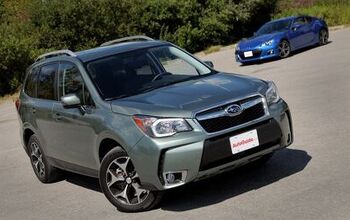
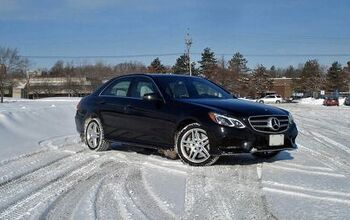

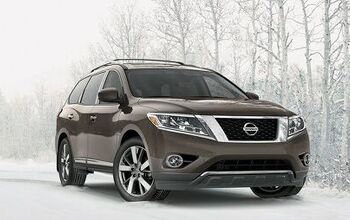
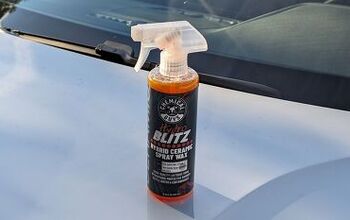
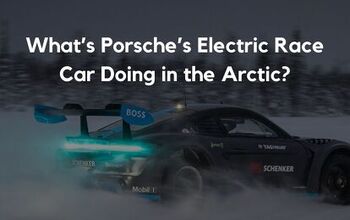

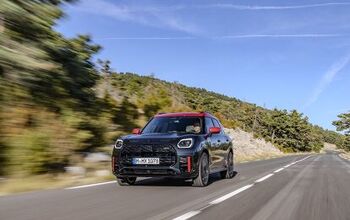






Comments
Join the conversation
This is obviously aimed at markets with taxes related to the amount of CO2 per km, like in EU. I guess that all 4wd will follow the same path, it becomes impossible to buy a big 4wd otherwise (8K of tax in France if the car emits more than 200g/CO2/km)
Ours does not start in the cold weather. If left our in temperatures below -25C for 3 hours or more it will not start. Most attempts to then boost it burn out the Fuse Relay. Nissan Canada is trying to find the root cause but this version has serious usability issues for any living in northern winter climates.